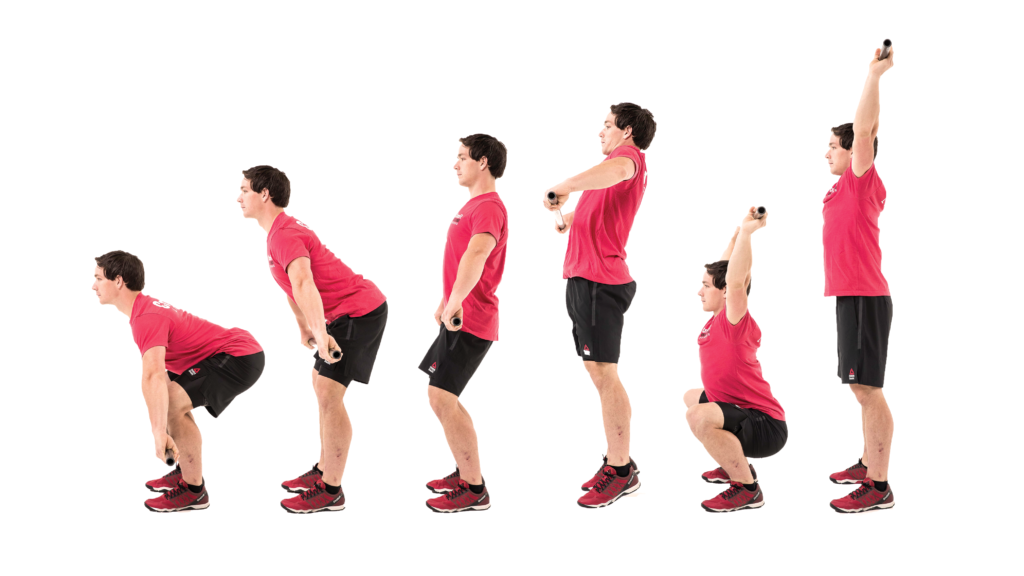As we’ve explored previously (see “Push Jerk,” “Med-Ball Clean,” and “Sumo Deadlift High Pull”), progressions offer an opportunity to refine and familiarize athletes with difficult movements. Trainers often relegate the use of progressions to an athlete’s first exposure to a movement or the initial stages of the learning process. While this application is certainly useful, progressions can prove helpful for athletes of any experience level.
Movements that have not been trained recently will improve with the technical reminders found within a solid progression. Critical positions and timing will be recalled much more quickly if the athlete is allowed to work through the steps before jumping into the full movement. Many errors can be quickly resolved during the lead-up to the full skill, increasing the number of successful reps.
Progressions also serve as an excellent addition to a warm-up. The trainer can lead the group through the steps together, focusing athletes on the important elements while increasing their core body temperature and prepping them for more intense activity. The trainer also can capitalize on this time by attempting to resolve as many technical issues as possible before the workout begins in earnest. During this time, skilled trainers will begin to develop a sense of who is likely to need assistance once the workout begins, preempting potential breakdowns in technique.
Further, if you understand which steps in a progression best address which points of performance, these pieces can be used as corrective tools. To use the push jerk as an example: Even more experienced athletes often struggle to correctly time the drive from the hips and the press of the arms when they take up the bar or PVC in the warm-up or workout. In such instances, the trainer can take the athlete back to the jump, punch, and land part of the push jerk progression. An athlete can perform multiple repetitions of this sequence. Once they have the correct timing, getting to full hip extension before landing with arms locked out overhead, the PVC can be reintroduced. Working this way is very effective for long-term development and remains applicable to athletes of all levels.
Regardless of skill or fitness level, revisiting movement progressions can increase an athlete’s level of technical refinement. While seeming intuitive, simply performing a movement in its entirety at a lighter load or intensity is often not the most efficient way to gain proficiency.
Today’s workout is:
Complete as many rounds as possible in 20 minutes of:
500-m row
50 single-leg squats, alternating
10 squat snatches
♀ 95 lb. ♂ 135 lb.
Challenge yourself to incorporate the progression from the snatch into your lesson plan for today’s workout. One example of a snatch progression can be found on pages 241-243 of the CrossFit Level 1 Training Guide.
Comments on The Power of Progression, Part 4: Using Progressions
Part 5: https://www.crossfit.com/essentials/the-power-of-progressions-part-5-building-progressions
This article continues to open Part 3 for me. Am I the only one having this issue?
On the sequence number 4, the athlete should jump (triple extension) and then pull 👌

The Power of Progression, Part 4: Using Progressions
3